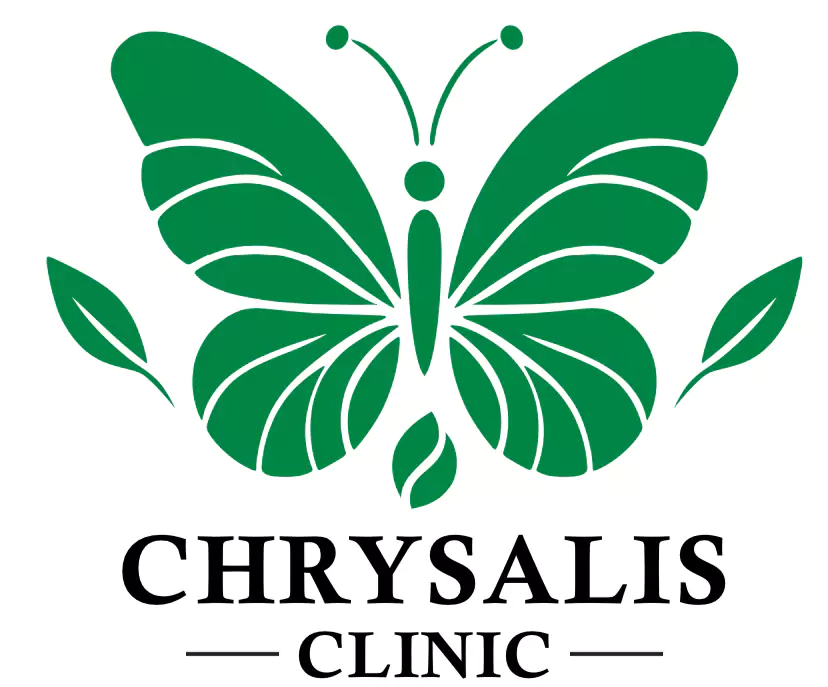Understanding delirium is crucial for those involved in healthcare, especially when caring for the elderly or patients in intensive care units. Delirium is a complex and often misunderstood condition, marked by a sudden change in attention and cognition. It requires prompt identification and management to prevent long-term complications. Despite its significance, delirium is frequently confused with other cognitive disorders, complicating timely intervention.
Introduction to Delirium
From a medical standpoint, delirium is an acute change in awareness and thinking. It is a significant issue, often happening because of an illness or infection. Hospital visits commonly find delirium as a temporary mix-up that changes during the day. This condition demands attention as it can affect patient recovery and increase healthcare challenges.
Understanding delirium involves knowing what separates it from dementia and depression. Dementia is a slow and ongoing decrease in thinking abilities, different from the abrupt onset of delirium. Depression shifts the mood, not consciousness or understanding. These distinctions are crucial for doctors diagnosing and managing delirium cases.
Recognizing the Symptoms: Early Detection of Delirium
Recognizing the symptoms of delirium can truly be life-saving for individuals. Abrupt confusion and disorientation are common early signs seen in delirium. Patients may face challenges staying focused, sometimes even seeing things that aren’t real. Alertness can fluctuate drastically, alternating between agitated states and lethargy. Early detection is key because it allows for immediate care, potentially curbing the episode’s length.
When looking at delirium next to disorders like dementia, onset timing is crucial here. Dementia symptoms increase slowly over time and get gradually worse. The signs of delirium appear suddenly, often quite quickly over hours or days. Also, with dementia, memory struggles tend to be steady over time. Yet those experiencing delirium might regain full awareness temporarily.
Understanding what is delirium means knowing these differences when comparing conditions. What does delirium mean often ties to sudden change, unlike confusion that creeps along due to other illnesses. Knowing these nuances means getting the right help faster for those affected. Delirium thrives on prompt awareness; the quicker it’s identified, the faster it can be treated.
Causal Factors of Delirium: What Triggers It?
Infections can often trigger delirium, especially in older adults with urinary tract issues. Alcohol withdrawal is also known to cause severe cases of delirium tremens, presenting in those detoxing from alcohol. Surgeries, mainly complex ones involving anesthesia, can lead to delirium due to the physical and mental stress involved.
ICU delirium is common among ICU patients because of the continuous monitoring and frequent medication changes. Sleep disruption, noisy environments, and factors like oxygen levels contribute to this condition. Understanding hospital settings helps create strategies to minimize such risks for people in critical care.
Understanding the Risk Factors
Age is one of the main reasons older people get delirium. As people age, their bodies handle stress and illness differently than younger ones. Having condition like dementia or break a bone recently can make it worse. It’s important to know these risks and try to stop them early.
Diagnosing delirium in older folks can be tough due to similar symptoms with dementia or depression. Also, some quieter symptoms might be mistaken for harmless confusion instead of an urgent problem. Better assessment methods need focus on older patients for the best possible care.
The Importance of Prompt Medical Attention
Delirium requires quick medical care since it starts fast and is bad for health. What is delirium exactly? It’s when brain functions change quickly, causing confusion and thinking problems. Getting medical help right away is crucial because not acting fast can lead to serious trouble. What causes delirium in hospital patients is infections or certain medicines, demanding urgent action.
Quick action helps patients get the right diagnosis and treatment in time. Waiting for care can make things worse. Patients might face long-term thinking problems or higher risks of death. Knowing what delirium means for health is vital for healthcare providers and families.
Doctors must spot and treat delirium in elderly adults quickly since they are more at risk. Finding and fixing the problem early can make a big difference, cutting the chance of problems sticking around.
Ignoring delirium can bring about major health issues. Cognitive issues linked with delirium can escalate rapidly, worsening symptoms. What does delirium do to the brain? It affects alertness and perception because of inflammation or other disruptions. If delirium is not treated, it can lead to long-lasting cognitive troubles or even dementia-like states, especially in older folks.
Physical health also suffers when delirium happens. It messes with sleep and leads to lower functional ability, requiring more severe care needs. Knowing the signs and symptoms of delirium is key to avoiding these bad results. Moreover, ignoring delirium in elderly people can mean longer hospital stays, bigger care bills, and a higher death rate.
Practical Advice for Families and Caregivers
Caring for a loved one with delirium needs careful attention and patience. Always try to keep their space calm to avoid extra confusion.
- Use personal things around: Familiar things can make them feel more secure, like pictures or keepsakes.
- Stay on top of diet and drinks: Check they have enough water and eat balanced meals regularly.
- Keep an eye on medicine: Chat with doctors about any medicine that might trigger delirium.
- Stick to a routine: Same daily activities can help lessen uncertainty and disorientation.
Find simple tasks that can engage their mind and keep chatting direct. It helps if instructions are straightforward, which can greatly reduce misunderstanding. This routine can aid caregivers in handling delirium better wherever care is given.
Caregivers should be ready to deal with changing symptoms of delirium. Having good knowledge about what delirium means is key for better care. Flexibility is needed.
- Look out for any changes: Make a note of mental shifts and inform healthcare professionals as needed.
- Foster brain exercises: Engaging in puzzles or chats keeps their mind lively and alert.
- Offer steady support: Being there constantly reassures them and keeps spirits up.
- Be part of support networks: Meeting others caring for similar patients helps exchange advice and support each other.
Proactively identifying possible issues like dehydration helps prevent elderly delirium. Understanding triggers helps prevent trouble, and consulting healthcare experts boosts the caregiving approach. Staying informed lets caregivers offer the most meaningful help.
What Clinicians Should Know: Managing Delirium
Clinicians must focus on recognizing subtle signs when managing delirium effectively. This includes understanding what delirium is in medical terms to create plans.
Non-pharmacological strategies include calming the patient’s environment to prevent confusion. Simple measures like appropriate lighting and minimizing noise help maintain stability.
Pharmacological strategies should be used cautiously and only when needed. Evaluating the need for antipsychotics or benzodiazepines is crucial. Tailor approaches for hyperactive and hypoactive delirium based on symptom presentation.
An accurate diagnosis of delirium is vital, using tools like the Confusion Assessment Method (CAM). Clinicians need to know what are the signs of delirium, such as confusion or altered alertness.
- Gather patient history: This helps identify factors contributing to delirium, like surgeries or health issues.
- Collaborate with experts: In complex cases, working with neurologists and psychiatrists can provide valuable insights.
Knowing what causes sudden delirium aids in prevention, so continuous monitoring and lab tests are essential for early detection.
Behavioral Strategies in Managing Delirium
Utilizing non-pharmacological interventions plays a significant role in managing delirium. These strategies focus on enhancing patient comfort and boosting cognitive function without using medication.
- Re-orientation techniques: Gently remind the patient daily where they are now.
- Encouraging mobility: Move patients regularly to prevent muscle weakening and stiffness.
- Environmental adjustments: Keep the lighting appropriate and limit unnecessary loud sounds.
These methods contribute to a gentle healing process, promoting cooperation, supporting recovery efforts.
Creating a supportive environment is essential when dealing with delirium disease. A stable setting helps ease some of delirium’s tough symptoms. This builds trust between caregivers and patients, aiding their recovery.
- Visual cues: Use simple aids like calendars or clocks to orient folks easily.
- Consistent caregivers: Help lessen confusion by having regular same caregivers visit.
- Social interaction: Let loved ones visit often; familiar faces provide reassurance.
A strong environment not only eases symptoms but also supports longer-term healing efforts.
Medication Options for Delirium Management
Medication is an important part of delirium management but should be used cautiously. Understanding the difference between hyperactive and hypoactive delirium helps in choosing the right treatment.
- For hyperactive delirium, symptoms include restlessness and agitation. Antipsychotic medications might help manage symptoms effectively.
- For hypoactive delirium, patients appear sluggish and quiet. Boosting alertness without medication should be a priority in care.
Treatment plans need to be tailored to reduce dependency on medication while helping the patient.
Medication use in delirium brings risks that need careful consideration. Knowing what medications can cause delirium reduces inappropriate treatment choices. Benzodiazepines and sedatives often make symptoms worse in some patients.
- Keep a close watch: Adjust doses based on how the patient reacts.
- Check their medical background: Evaluate any history with psychiatric drugs before prescribing anything new.
- Use a combined approach: Pair medications with non-drug methods for a well-rounded treatment strategy.
Doctors aim for fewer medications, focusing on understanding delirium’s causes and using preventive methods.
Preventing Delirium: Strategies and Interventions
To prevent delirium, knowing what causes it is critical. By being educated, families and caregivers can take action to avoid it.
- Regular Monitoring: Consistently check on patients in hospitals or ICUs. Early spotting helps with unusual behavior.
- Medication Management: Watch medicines that might cause delirium. Always ask doctors about mixing different medications.
- Nutritional Support: Ensure the patient eats well and drinks enough. Poor nutrition or lack of water raises the risk of delirium.
- Environmental Adaptations: Simple signs and familiar areas reduce confusion and stress for patients.
- Physical Activity: Include light exercises if possible, as they help both mind and body.
Clear communication is key between the patient, their caretakers, and medical staff. It plays a vital role in avoiding and handling delirium. Keeping everyone informed about triggers and signs helps.
- Establish Protocols: Medical staff should use set rules to handle delirium risks carefully.
- Educate Caregivers: Training family and helpers about delirium gives them confidence to act early if needed.
- Encourage Expression: Let patients share any discomfort quickly to assist with fast diagnosis.
- Follow-up Visits: After leaving care, ongoing checkups can catch warning signs early on, offering extended support.
Conclusion: Toward Better Delirium Outcomes
In our journey to grasp what delirium truly entails, its complexity unfolds. Delirium isn’t merely a transient state of disorientation; it can significantly disrupt the healing process for patients. Recognizing symptoms and acting quickly plays a crucial role in patient outcomes.
Preventing, identifying early, and managing delirium are key priorities. Maintaining open dialogue with healthcare providers is crucial. Families and caregivers should understand delirium’s symptoms and causes, whether from hospital stays, infections, alcohol withdrawal, or other factors.
Healthcare facilities must focus on fostering calm, stress-free environments to minimize delirium risk. Keeping noise to a minimum can help sensitive patients avoid agitation. Training on delirium management and effective support systems are imperative for caregivers and healthcare workers.
For those seeking deeper insights into delirium care, several resources can provide assistance:
- NICE guidelines offer extensive details on managing delirium comprehensively.
- The American Delirium Society promotes educational resources for both family and professionals.
- Articles like “The Role of Nursing in Delirium Management” can be enlightening.
- Coursera and edX provide online courses on delirium and associated disorders.
- Engage in workshops and seminars focused on preventing and caring for delirium effectively.

